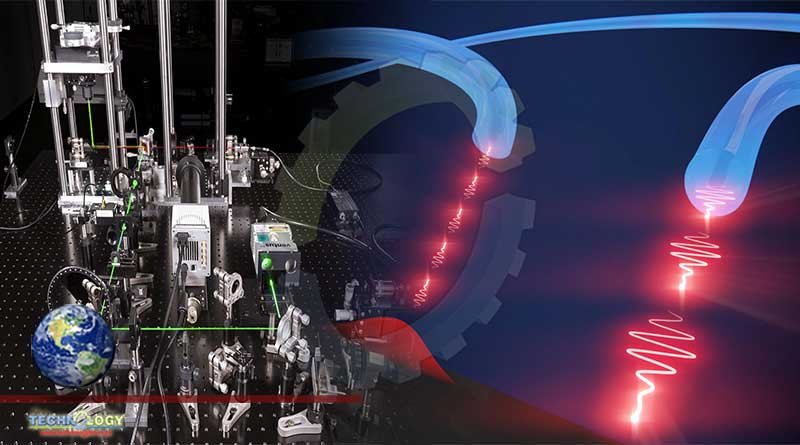Physicists developed a novel source of single photons – capable of producing billions of the tiny quantum particles each second.

Physicists from the University of Basel in Switzerland and Ruhr University Bochum in Germany developed a novel source of single photons – capable of producing billions of the tiny quantum particles each second.
An efficient proton source has profound applications in quantum technologies. With the single photon source’s efficiency, it could serve as the backbone for more powerful and precise quantum systems. For example, quantum cryptography promises to be an entirely secure mode of communication and it relies on the transmission of strings composed of single photons. Each of these light packets could contain information when processed in its quantum states. The same concept also powers quantum computing, with each unit of information being quantum bits – or qubits – instead of the traditional 1 or 0 binary bit.
Details of their study are reported in the journal Nature Nanotechnology, January 28, titled “A bright and fast source of coherent single photons.”
Funneling Light Into Single Photons
The single photon source with record efficiency was achieved through the use of “gated quantum dots” placed in a specially-constructed tunable microcavity. This serves as the “funnel” that captures all photons directed to it, guiding it after to an optical fiber. This innovation results in photons – reported at an average of two centimeters long – coming out of the other end of the optical fiber.
Each of the single photons begins by exciting a quantum dot, or an individual “artificial atom,” located in a semiconductor material. Without the “funnel,” photons will leave the quantum dot in almost every possible direction, becoming unusable and turns into losses for the systems. This was the scenario solved by the European scientists’ new design.
The system’s efficiency is at 57 percent. While it appears a little over half, it is already double compared to existing single photon sources. This efficiency refers to the chances of gaining a usable photon from the excitation of the quantum dot.
“This is a really special moment,” exclaims Richard Warburton, lead author of the study from the Department of Physics at the University of Basel. “We’ve known for a year or two what’s possible in principle. Now we’ve succeeded in putting our ideas into practice.”
The Future of Quantum Computing
Modern computers relying on conventional electronic designs face a limitation in their computing capabilities with respect to their scalability. While promising exponentially more power, quantum computers remain largely limited by the need for a scalable photon source.
“This capacity of encoding enormous amounts of information and then operating on it would simply supersede any classical computer capability we can possibly predict,” explains Emanuele Pelucchi, a researcher from the Irish Photonic Integration Center, in a previous interview with Photonics Media.
With regard to the new single photon source, this marked increase in efficiency is a breakthrough in the field, promising orders of magnitude in improvement over a string of more photons. Warburton explains that in the future, they are looking to improve on their design. “We’d like to simplify it and pursue some of its myriad applications in quantum cryptography, quantum computing and other technologies.”
Originally published at Science Times
